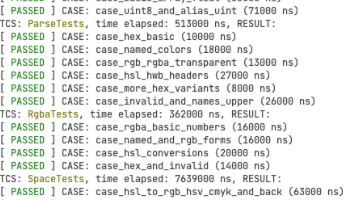pgsql json,jsonb
关于pgsql 的json 和jsonb 的数据处理笔记
-
json 和jsonb 区别
两者从用户操作的角度来说没有区别,区别主要是存储和读取的系统处理(预处理)和耗时方面有区别。json写入快,读取慢,jsonb写入慢,读取快。 -
常用的操作符
操作符:
-> // 右边传入整数(针对纯数组),获取数组的第n个元素,n从0开始算,返回值为json
示例: select '[{"a":"foo"},{"b":"bar"},{"c":"baz"}]'::json->2 // 输出 {"c":"baz"}
-> // 右边传入键值(针对关联数组),获取数组的第n个元素,n从0开始算,返回值为json
示例: select '{"a": {"b":"foo"}, "c":{"a": "aaa"}}'::json->'a' // 输出 {"b":"foo"}
->> // 右边传入整数(针对纯数组),获取数组的第n个元素,n从0开始算,返回值为文本
示例: select '[{"a":"foo"},{"b":"bar"},{"c":"baz"}]'::json->>2 // 输出 {"c":"baz"}
->> // 右边传入键值(针对关联数组),获取数组的第n个元素,n从0开始算,返回值为文本
示例:select '{"a": {"b":"foo"}, "c":{"a": "aaa"}}'::json->>'a' // 输出 {"b":"foo"}
// 获取json子对象,传入数组,返回json
示例: select '{"a": {"b":{"c": "foo"}}}'::json#> '{a,b}' // 输出 {"c": "foo"}
// 获取json子对象并转换为文本,传入数组,返回文本
示例: select '{"a": {"b":{"c": "foo"}}}'::json#>> '{a,b}' // 输出 {"c": "foo"}
- 操作函数
目前pgsql版本提供了两套函数分别处理,可以通用,名称也差不多,比如 json_each 和 jsonb_each , json_array_elements 和 jsonb_array_elements 。
json相关的处理函数比较多,常用的有如下三个,这三个基本够用了
json_object_keys // 返回json的键(多层只返回第一层),该函数不能用于纯数组.
json_array_elements // 提取转换纯数组元素
json_extract_path // 返回JSON值所指向的某个键元素(相当于 #> 操作符),该函数不能直接操作纯数组。
需要注意的是如果你创建字段用的是json就用json相关函数,如果创建字段用的是jsonb就用jsonb相关函数。
json_object_keys 函数示例:
select json_object_keys ('
{
"goods":
[
{"id": "676a13d3-0225-4431-b858-678c3cfeab74", "weight": "1", "quantity": "9999999"},
{"id": "111a13d3-0225-4431-b858-678c3cfeab75", "weight": "2", "quantity": "33"}
],
"quantity": "10"
}
')输出:
json_object_keys 函数示例:
select json_object_keys ('
[
{"id": "676a13d3-0225-4431-b858-678c3cfeab74", "weight": "1", "quantity": "9999999"},
{"id": "111a13d3-0225-4431-b858-678c3cfeab75", "weight": "2", "quantity": "33"}
],
')输出:
ERROR: cannot call json_object_keys on an array // 不能用于数组
json_array_elements 函数 示例:
select json_array_elements ('
[
{"id": "676a13d3-0225-4431-b858-678c3cfeab74", "weight": "1", "quantity": "9999999"},
{"id": "111a13d3-0225-4431-b858-678c3cfeab75", "weight": "2", "quantity": "33"},
{"id": "111a13d3-0225-4431-b858-678c3cfea999", "weight": "3", "quantity": "11"}
]
')我们看到json数据被分离成三条记录,这时我们就可以对其进行查询操作,
比如查询是否包含了weight=3的数据。
select * from json_array_elements ('
[
{"id": "676a13d3-0225-4431-b858-678c3cfeab74", "weight": "1", "quantity": "9999999"},
{"id": "111a13d3-0225-4431-b858-678c3cfeab75", "weight": "2", "quantity": "33"},
{"id": "111a13d3-0225-4431-b858-678c3cfea999", "weight": "3", "quantity": "11"}
]
') as jae
where jae::jsonb->>'weight' = '3' 输出:
我们看到这样就可以到对json数据内部进行查询了。
json_extract_path 函数示例:
比如要获取键 ‘goods’ 的值:
{
"goods":
[
{"id": "676a13d3-0225-4431-b858-678c3cfeab74", "weight": "1", "quantity": "9999999"},
{"id": "111a13d3-0225-4431-b858-678c3cfeab75", "weight": "2", "quantity": "33"}
],
"quantity": {"max": "150", "min": "2"}
}
select json_extract_path ('
{
"goods":
[
{"id": "676a13d3-0225-4431-b858-678c3cfeab74", "weight": "1", "quantity": "9999999"},
{"id": "111a13d3-0225-4431-b858-678c3cfeab75", "weight": "2", "quantity": "33"}
],
"quantity": {"max": "150", "min": "2"}
}
' , 'goods' ) ; // 第二个参数表示获取键为goods的值输出:
json_extract_path 函数和 pgsql 提供的操作符 #> 是一样的。
select ('
{
"goods":
[
{"id": "676a13d3-0225-4431-b858-678c3cfeab74", "weight": "1", "quantity": "9999999"},
{"id": "111a13d3-0225-4431-b858-678c3cfeab75", "weight": "2", "quantity": "33"}
],
"quantity": {"max": "150", "min": "2"}
}
') ::json #> '{goods}'两者的输出是一致的。
同样我们要输出 键quantity 下键max 的值:
select json_extract_path ('
{
"goods":
[
{"id": "676a13d3-0225-4431-b858-678c3cfeab74", "weight": "1", "quantity": "9999999"},
{"id": "111a13d3-0225-4431-b858-678c3cfeab75", "weight": "2", "quantity": "33"}
],
"quantity": {"max": "150", "min": "2"}
}
' , 'quantity','max' ) ;
-- 或
select ('
{
"goods":
[
{"id": "676a13d3-0225-4431-b858-678c3cfeab74", "weight": "1", "quantity": "9999999"},
{"id": "111a13d3-0225-4431-b858-678c3cfeab75", "weight": "2", "quantity": "33"}
],
"quantity": {"max": "150", "min": "2"}
}
') ::json #> '{quantity, max}
两者输出是一样的。
这几个函数是可以联合使用的。
比如我们要查询 键“goods” 下weight =2 的id 和quantity 值,语句如下:
select jae::json->>'id' as id, jae::json->>'quantity' as quantity from json_array_elements (
json_extract_path ('
{
"goods":
[
{"id": "676a13d3-0225-4431-b858-678c3cfeab74", "weight": "1", "quantity": "9999999"},
{"id": "111a13d3-0225-4431-b858-678c3cfeab75", "weight": "2", "quantity": "33"}
],
"quantity": {"max": "150", "min": "2"}
}
' , 'goods' ) ) as jae where jae::json->> 'weight' = '2'输出:
上述的json语句我们可以当做字段来使用,就相当于对表记录进行操作了。
接下来我们同个一个例子讲解json在表中的用法:
示例:查询表中jsonb_msg字段中goods下id=1003和1002的记录,表中输入如下图:
sql查询语句:
select name,* from upgrade_test.test1 test
where
( select count(*) from jsonb_array_elements (
jsonb_extract_path(test.json_msg , 'goods' ) ) as jae where jae::json->> 'id' in ('1001','1003') ) > 0 ; 输出:
效率还行:
Total query runtime: 11 msec
检索到 2 行。
官方文档页:
https://www.postgresql.org/docs/9.4/static/functions-json.html
PostgreSQL9.4 新增 JSONB 数据类型, JSONB 同时属于 JSON (JavaScript Object Notation) 数据类型,jsonb 和 json 的输入数据几乎完全通用,最大的差别体现在效率上,json 存储的数据几乎和输入数据一样,存储的是未解析的数据,调用函数时使用效率较低; 而 jsonb 存储的是分解的 binary 格式数据,使用时不需要再解析了,因此使用上效率较高; 另一方面 json 在写入时较快,而 jsonb 写入时由于需要转换导致写入较慢。下面通过些简单的例子了解两者的差异。
–1 这个例子两者没啥差异
francs=> SELECT '[1, 2, "foo", null]'::json;
json
[1, 2, “foo”, null]
(1 row)
francs=> SELECT '[1, 2, "foo", null]'::jsonb;
jsonb
[1, 2, “foo”, null]
(1 row)
备注: json 类型输出的内容和写入的内容一样,不会对输出的结果改变,而 jsonb不一样,看下面的例子。
–2 jsonb 输出内容顺序不一样
francs=> SELECT '{"bar": "baz", "balance": 7.77, "active":false}'::json;
json
{“bar”: “baz”, “balance”: 7.77, “active”:false}
(1 row)
francs=> SELECT '{"bar": "baz", "balance": 7.77, "active":false}'::jsonb;
jsonb
{“bar”: “baz”, “active”: false, “balance”: 7.77}
(1 row)
–3 jsonb: 整数类型输出不一样
francs=> SELECT '{"reading": 1.230e-5}'::json, '{"reading": 1.230e-5}'::jsonb;
json | jsonb
———————–+————————-
{“reading”: 1.230e-5} | {“reading”: 0.00001230}
(1 row)
–4 jsonb: 去掉了空格
francs=> select ' {"id":1,
"name":"francs",
"remark":"a good guy!"
}'::json;
json
{“id”:1, +
“name”:”francs”, +
“remark”:”a good guy!”+
}
(1 row)
francs=> select ' {"id":1,
"name":"francs",
"remark":"a good guy!"
}'::jsonb;
jsonb
{“id”: 1, “name”: “francs”, “remark”: “a good guy!”}
(1 row)
–5 jsonb: 重复的元素值仅保留最后一个
francs=> select ' {"id":1,
"name":"francs",
"remark":"a good guy!",
"name":"test"
}'::jsonb;
jsonb
{“id”: 1, “name”: “test”, “remark”: “a good guy!”}
(1 row)
备注: json 类型的输出和输入一样,会保留所有重复的元素,而 jsonb 对于重复的元素仅保留最后出现的重复元素。
–6 关于索引
GIN 索引支持 jsonb 类型,支持大的 jsonb 表中基于 keys 或者 key/values 模式的检索。
默认的 GIN 索引模式支持带有 @>, ?, ?& 和 ?| 操作的查询,关于这些操作符的含义参考本文的附录。
假如有一个文档:
{
"guid": "9c36adc1-7fb5-4d5b-83b4-90356a46061a",
"name": "Angela Barton",
"is_active": true,
"company": "Magnafone",
"address": "178 Howard Place, Gulf, Washington, 702",
"registered": "2009-11-07T08:53:22 +08:00",
"latitude": 19.793713,
"longitude": 86.513373,
"tags": [
"enim",
"aliquip",
"qui"
]
}我们将表名定义为 api, jsonb 字段为 jdoc,创建如下索引
CREATE INDEX idx_gin_api_jdoc ON api USING gin (jdoc);那么如下的查询可以使用索引
-- Find documents in which the key "company" has value "Magnafone"
SELECT jdoc->'guid', jdoc->'name' FROM api WHERE jdoc @> '{"company": "Magnafone"}';备注:上面这个例子来自手册。
7 附 Additional jsonb Operators
| Operator | Right Operand Type | Description | Example |
|---|---|---|---|
| = | jsonb | Are the two JSON values equal? | ‘[1,2,3]’::jsonb = ‘[1,2,3]’::jsonb |
| @> | jsonb | Does the left JSON value contain within it the right value? | ‘{“a”:1, “b”:2}’::jsonb @> ‘{“b”:2}’::jsonb |
| <@ | jsonb | Is the left JSON value contained within the right value? | ‘{“b”:2}’::jsonb <@ ‘{“a”:1, “b”:2}’::jsonb |
| ? | text | Does the key/element string exist within the JSON value? | ‘{“a”:1, “b”:2}’::jsonb ? ‘b’ |
| ? | text[] | Do any of these key/element strings exist? | |
| ?& | text[] | Do all of these key/element strings exist? | ‘[“a”, “b”]’::jsonb ?& array[‘a’, ‘b’] |
8 参考
WAITING FOR 9.4 – INTRODUCE JSONB, A STRUCTURED FORMAT FOR STORING JSON
PostgreSQL 9.4 Beta 1发布,支持JSONB
PostgreSQL 9.4 new data type jsonb - do not need to reparser when used
JSON Types

新一代开源开发者平台 GitCode,通过集成代码托管服务、代码仓库以及可信赖的开源组件库,让开发者可以在云端进行代码托管和开发。旨在为数千万中国开发者提供一个无缝且高效的云端环境,以支持学习、使用和贡献开源项目。
更多推荐
 已为社区贡献4条内容
已为社区贡献4条内容







所有评论(0)